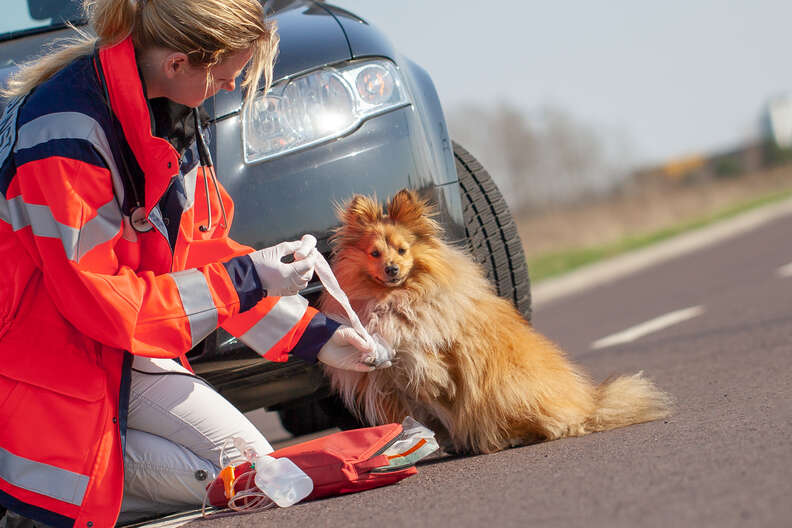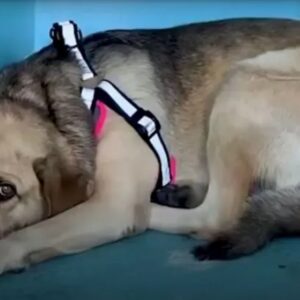Accidents happen, and when they do, you want to make sure you’re prepared. So, just as you have assembled a first aid kit for your family filled with bandages, antibacterial ointment and gauze, you should make one for your dog, too!
An emergency vet shared the two essentials for a dog-friendly first aid kit and what you should do after you need to use it.

SHUTTERSTOCK/NEHRIS
“Wounds are probably the most common first aid emergency people will encounter with their dogs,” emergency vet Dr. David Israel, MD of VEG Denver, told The Dodo. “Bite wounds from other dogs or animals, or wounds from stepping on things or running into things like tree branches are common. Therefore, having something to clean a wound with is important.”
Dr. Israel said that antiseptic agents like hydrogen peroxide, rubbing alcohol and betadine do the job of killing germs well, but they can also damage your dog’s skin and ultimately lead to poor healing or even infection.

INSTAGRAM/VETERINARY_EMERGENCY_GROUP
“The best thing to clean a wound with is water!” he said. “If your dog suffers a wound, rinsing it with water using a squirt bottle and some gentle pressure is the best way to wash away debris and bacteria.”
And alongside that squirt bottle of water, Dr. Israel recommends putting bandage material in your dog’s first aid kit, too.
“If your dog suffers a wound, once it is cleaned, it is best to loosely cover it with clean gauze and some bandage material,” he said. “You can purchase bandage material at any pharmacy.”

INSTAGRAM/DR.MADISONLOPP AND VETERINARY_EMERGENCY_GROUP
But if you’re going to bandage, make sure you have a vet appointment scheduled.
“While we generally do not recommend people bandage their pets at home, covering a wound to prevent further contamination from the environment and then heading to the nearest vet hospital is ideal.”
It’s important to keep this first aid kit with you both at home and while you’re out on walks, hikes, road trips, or when you’re camping. Your pup is more likely to get injured when not in the comfort of their own home, so always make sure your kit is in your travel pack when you leave the house.
And if you ever do experience an accident while out and about, Dr. Israel shares the first steps you should take to remedy the situation.

SHUTTERSTOCK/TOMMASO LIZZUL
“If it’s a wound, rinse it with water and some gentle pressure from a squirt bottle, cover the wound with bandage material and then head to the closest veterinary hospital,” Dr. Israel said.
Bandages should always be placed loosely unless there is active bleeding. If a wound is bleeding, apply more pressure when you wrap it.
“However, it is very important to head to a vet hospital ASAP, as prompt care of a wound by a veterinarian is the best way to a fast recovery,” Dr. Israel added. “Wounds that are not treated promptly, especially within the first few hours, are at higher risk for infection and poor healing.”

SHUTTERSTOCK/LIGHTFIELD STUDIOS
But if you find yourselves on a hiking trail, dog park, or campsite and suddenly your dog seems weak or can’t walk, Dr. Israel said that this may be a sign of overheating or another internal problem.
“In this case, if you can, carry your dog to your car and get to your nearest vet ASAP,” he said. “In any emergency, no matter where you are, you can call your nearest Veterinary Emergency Group hospital, and we can advise you on what to do and may be able to even help get you and your pet to the hospital.”
You can even write the phone number of your nearest emergency vet hospital on the inside of your kit to make contacting them easier when not at home.
With a handy first aid kit, you and your dog can go on all your favorite outdoor adventures with more peace of mind.





